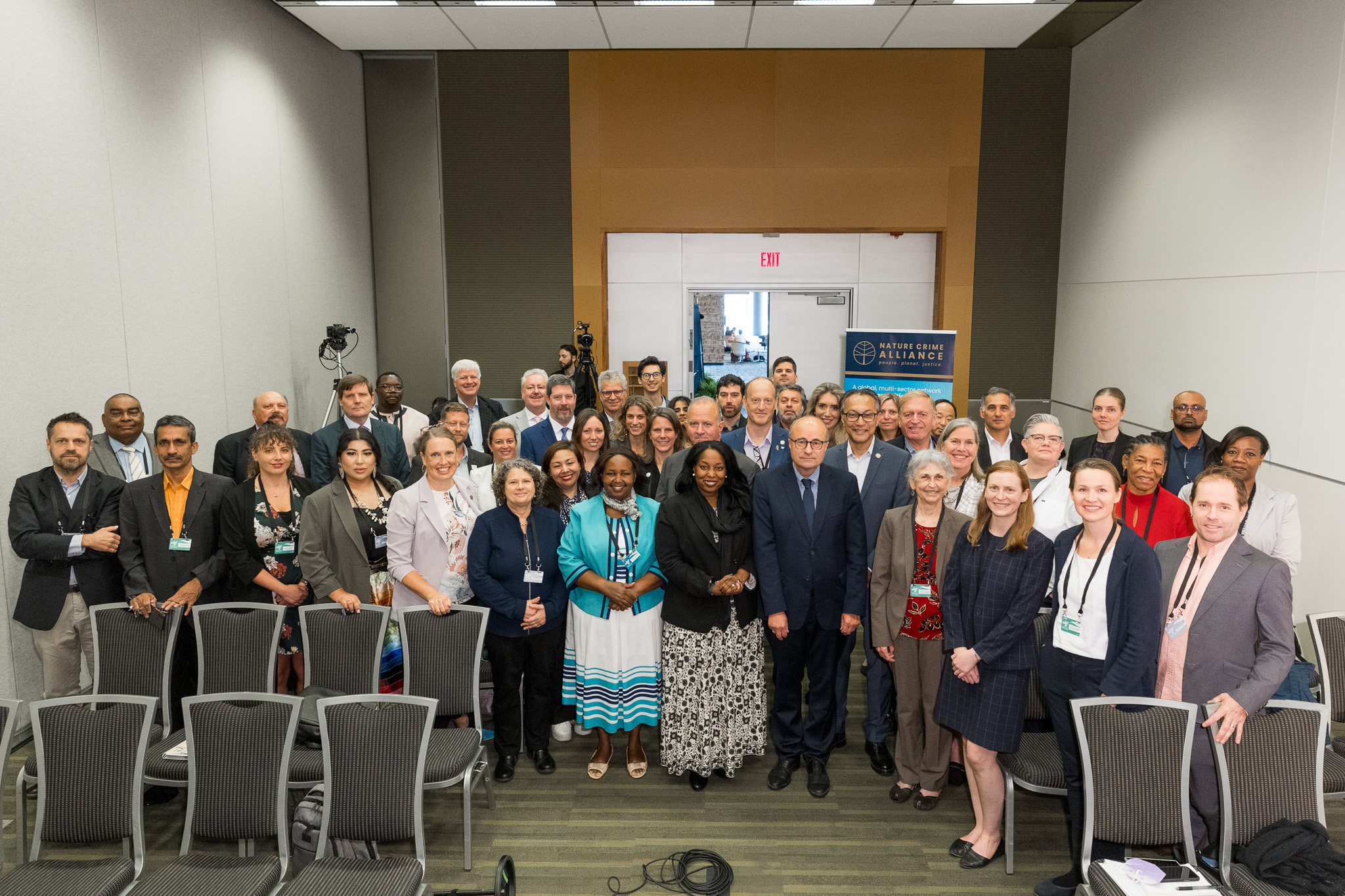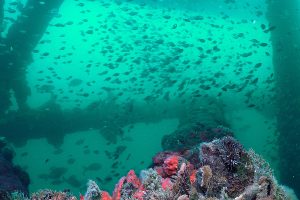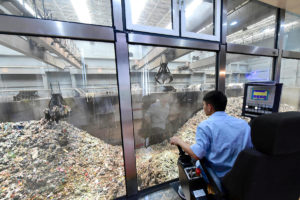A new global initiative has been launched to fight environmental crime and the criminal networks whose illicit activities are thought to generate as much as US$280 billion each year.
The Nature Crime Alliance, led by the governments of Norway, the United States and Gabon, will bring together states and international bodies, law enforcement agencies and civil society organisations to target the illegal exploitation of natural resources and wildlife.
Environmental crime is said to be fourth most lucrative criminal activity in the world, behind drug trafficking, human trafficking and counterfeiting, with illegal logging, land conversion, mining, fishing and wildlife trade, among the most prevalent forms.
The alliance, announced on Wednesday at a meeting of the world’s largest multilateral fund for environmental action, the Global Environment Facility, seeks to raise political will, increase financial commitments and boost international capacity to combat environmental crime.
“Nature crimes threaten our collective security. They undermine the rule of law, fuel corruption, destroy ecosystems, and drive species to the brink of extinction – all the while providing billions of dollars to transnational criminal syndicates,” said Jennifer Littlejohn, acting assistant secretary for the US oceans and environmental affairs bureau, at the alliance’s launch in Vancouver, Canada.
It’s time for global action to end the criminal exploitation and degradation of nature for financial gainGhada Waly, Executive director of UNODC
While many public, private, community-based and civil society organisations have emerged in recent years to counter environmental crime, these efforts have usually been fragmented – something the Nature Crime Alliance looks to address by providing a forum for collaboration and coordination. The UN Office on Drugs and Crime (UNODC) and Interpol have also joined the initiative, alongside civil society organisations such as wildlife trade monitor TRAFFIC, the World Resources Institute, and Indigenous Peoples Rights International (IPRI). There are 22 members in total and it is hoped more partners will join, as the alliance officially starts its work in the coming months.
Yulia Stange, director of the Nature Crime Alliance, said the members will work on key areas in which their collaborative, multi-sector approach can have a big impact. These include projects to identify and disrupt financial flows linked to environmental crime, efforts to accelerate the use of technology and work to strengthen the capacity of environmental defenders.
“Environmental crime is seen by criminals as an opportunity for huge profit and low risk. It’s seen as a victimless crime by the public, when in fact it has a big impact on people,” Stange said at the initiative’s launch. “The alliance wants to move the needle in environmental crime. We want to make it a high-risk and low-reward activity for criminals around the world.”
Environmental crime challenges
Experts have said that the prevalence of environmental crime constitutes a significant barrier to progress in tackling climate change, addressing biodiversity loss, reducing future pandemics and achieving sustainable development. The scale of the crimes is immense and their perpetrators are often linked to financial crimes, as well as labour and human rights violations. The Nature Crime Alliance reports that environmental crime generates between US$110 billion and US$281 billion in criminal proceeds each year, and may have indirect impacts as high as US$2 trillion annually.
Illicit mining operations destroy forests and contaminate rivers throughout the Amazon Basin and other vital forest ecosystems. Illegal fishing activities disrupt crucial food chains that serve both human populations and marine life. The trafficking of wildlife also threatens the survival of numerous iconic species, including tigers, jaguars, elephants and rhinos.
The abundance of flora, fauna and mineral resources in Latin America makes the region especially vulnerable to environmental crime. Reports have found that many organised criminal groups that historically engaged in illegal drug trafficking have now shifted their focus to environmental crime, capitalising on low risks, high profits and overall corruption.
As the home to nearly a quarter of the world’s tropical forests, Latin America is a hotspot in the illegal timber trade, which globally is estimated to be worth up to US$150 billion each year. For example, last year, a 12-country operation led by Interpol led to the recovery of over 80 truckloads of illegal timber from forests across Latin America and the Caribbean, valued of at more than US$700,000. Almost 300 incidents were reported during Interpol’s operation, and 69 individuals were arrested.

Latin America is the also world’s most dangerous region for environmental defenders, frequently targeted by environmental criminals. Since 2012, over 1,700 activists have been killed worldwide, with almost 70% of cases happening in Latin America. Brazil has had the highest number of killings, especially affecting Indigenous or Afro-descendants, followed by Colombia.
The Amazon rainforest has become a hotspot for environmental crime and violence against environmental defenders, partly because of its abundance of natural resources. Earlier this month, eight Amazon countries gathered in the Brazilian city of Belém, and signed a declaration committing to strengthen cooperation against environmental crimes. This included the creation of a joint environmental police force based in Manaus, in Brazil’s Amazonas state.
Although no Latin American government has yet signed up to Nature Crime Alliance, sources at the GEF Assembly told Diálogo Chino that some had expressed interest in joining.
While the Nature Crime Alliance is a step in the right direction, it will now have to address the many cross-cutting barriers to action that have been previously identified. These include political and economic elites protecting the beneficiaries of the crimes, the transnational scope of activities, and the globalised and complex nature of natural resources supply chains, among others.
“Organised crime groups are desecrating nature’s fragile ecosystems by engaging in wildlife trafficking, illegal mining, waste trafficking, and other illicit activities,” Ghada Waly, executive director of UNODC, said at the presentation of the alliance. “It’s time for global action to end the criminal exploitation and degradation of nature for financial gain.”
As yet, no firm financial pledges to fight environmental crime through the Nature Crime Alliance have been announced, while details over its functions and capacities are expected to be made clear in the coming months.
This story was produced with the support of Internews’ Earth Journalism Network.











